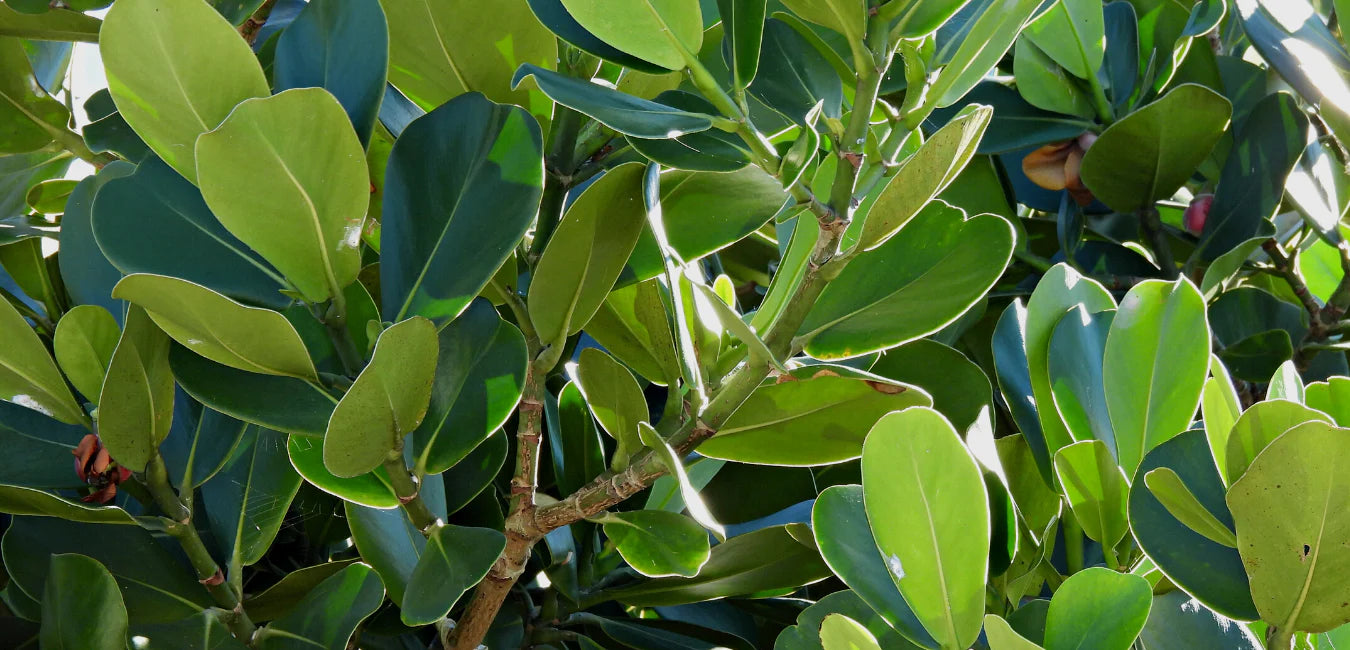Clusia is a large family of tropical evergreen shrubs, vines and trees with leathery latex leaves. A small number of their species have become popular as houseplants and are loved for their hardiness and thick, perky leaves.

CLUSIA
Varieties from our listing
Interested to buy a plant from this group?
See what we have available HERE
Below is a general care guide for Clusia plants which can slightly differ depending on variety.
Light & Temperature
Clusia will tolerate a range of light conditions from light shade, through bright indirect light to full sun. They’ll be happy outdoors or in a bright room. Watering requirements will be affected by the amount of light the plant receives, so remember to adjust accordingly.
Clusia enjoy warm temperatures and will be tolerant to normal Singapore room temperatures.
Watering, Humidity & Misting
Clusia should be watered once every week or so, depending on where the plant is kept. Aim to make the soil moist but not soggy. Water your Clusia when the top two inches of soil are dry. These plants are hardy and will be forgiving to the odd period of less frequent watering.
Clusia enjoy humidity so regular misting is recommended if the plant is kept in an indoor area where there is lots of air conditioning.
Soil and Repotting
Clusia prefer dry, well-draining soil.
Clusia will need repotting every 2-3 years or so, each time sizing up the pot slightly.
Propagation
Clusia can easily be propagated from cuttings. Take a 10-15cm stem with several leaves and place it in water or a suitable potting mix of peat, perlite and sand.
Fertiliser
Use a balanced fertiliser formulated for houseplants. Follow directions on the label of plant food.
Toxicity
Clusia sap is toxic if ingested and should be kept out of the reach of children and pets.
Possible Issues
Under the right care and conditions, your plant will grow happy and healthy and Clusia are hardy plants. But here are some issues you may encounter while caring for a Clusia:
Yellow leaves - This is usually a sign that the plant is being overwatered - the most common problem with Clusia. Stop watering and check the soil for signs of root rot and change the soil if necessary.
Mould on the soil - This is a sign that the plant’s soil is not drying quickly enough and the plant may not be getting enough light. Use a chopstick to make ventilation holes int he soil and place the plant in a better ventilated area.
Dropping leaves - This can happen when the plant is repotted or moved to a new environment. The plant should become stable after a while and grow its leaves back. This is a fast growing plant so it won’t take long.


- Regular Price
- from $25.00
- Sale Price
- from $25.00
- Regular Price
- Unit Price
- per


- Regular Price
- from $45.00
- Sale Price
- from $45.00
- Regular Price
- Unit Price
- per